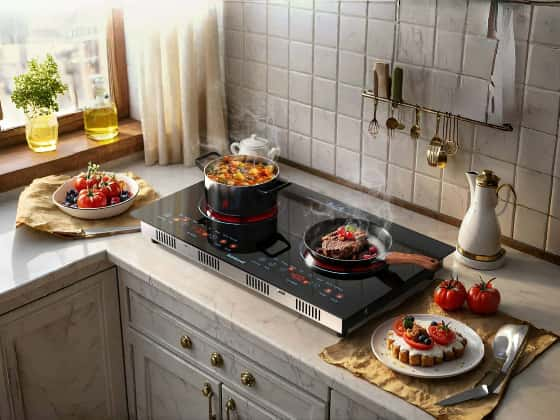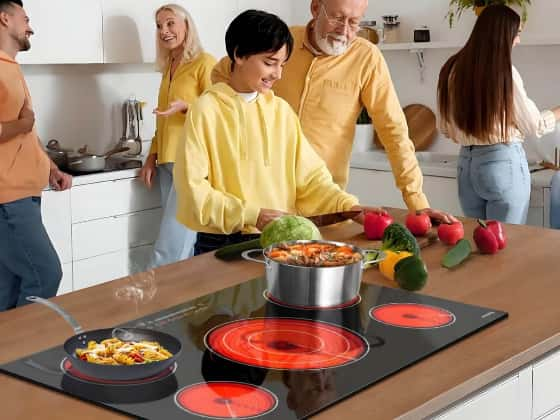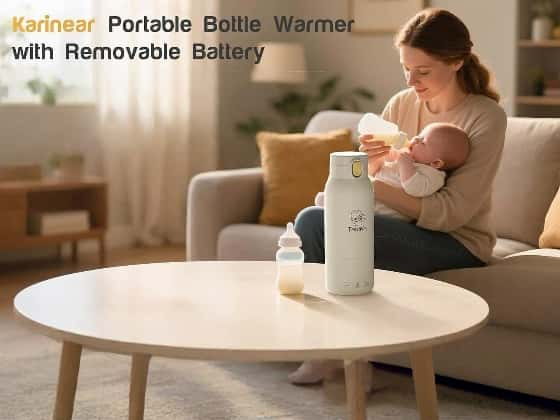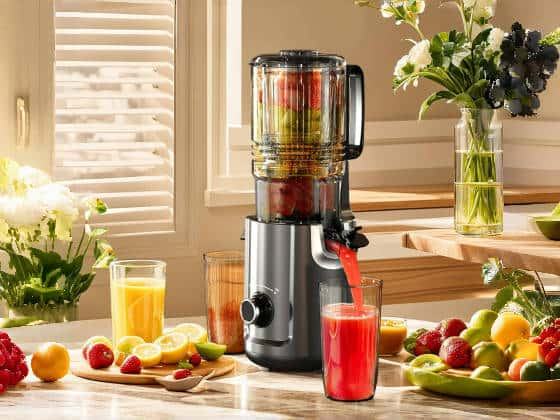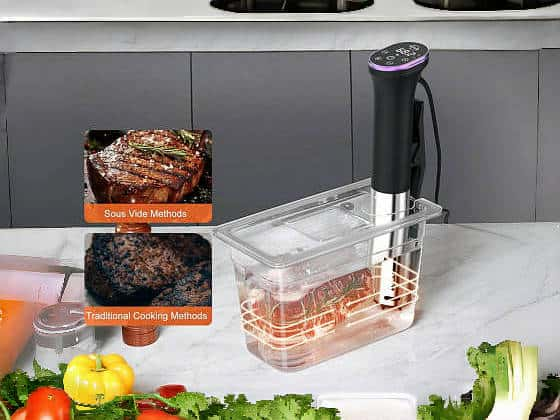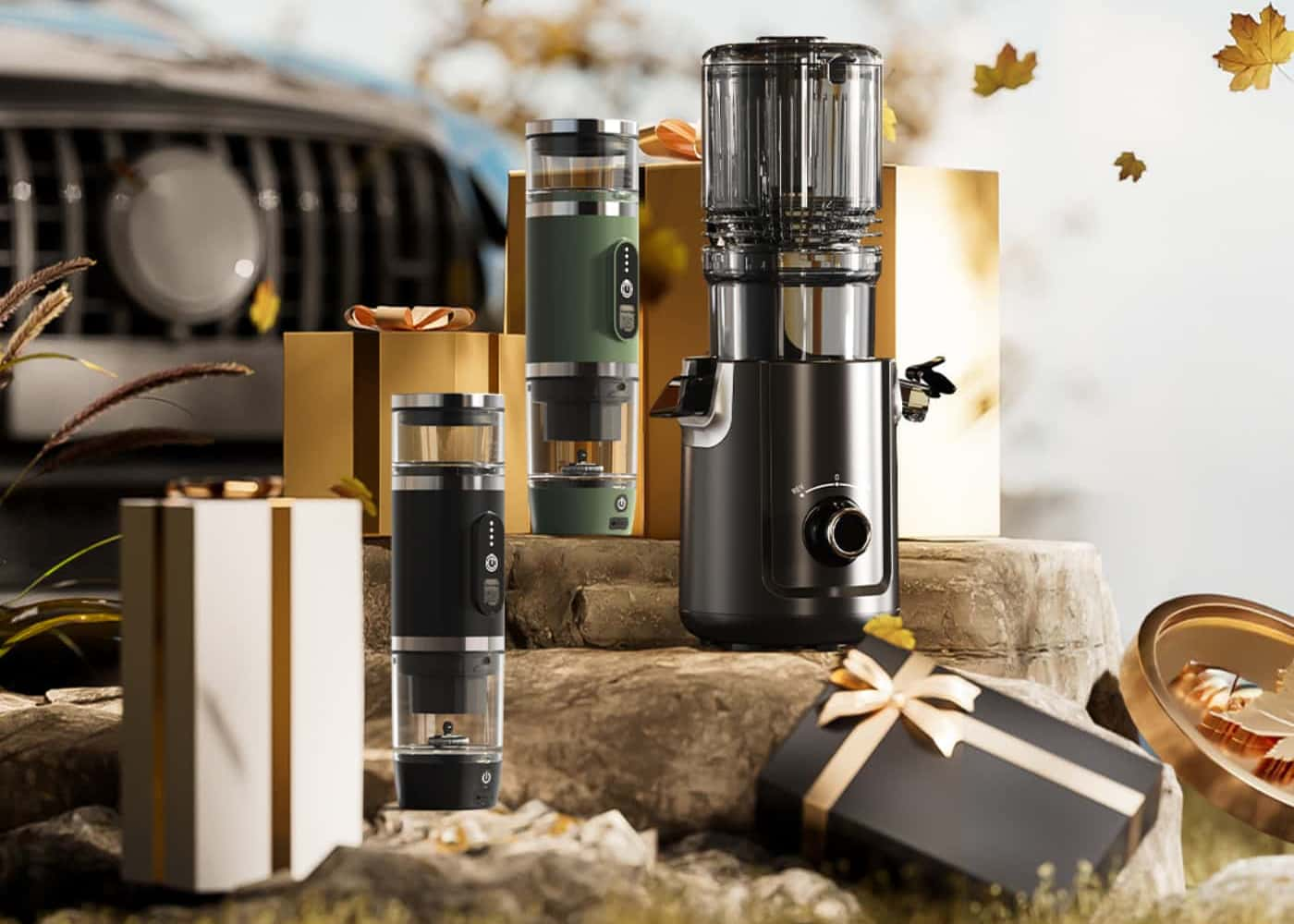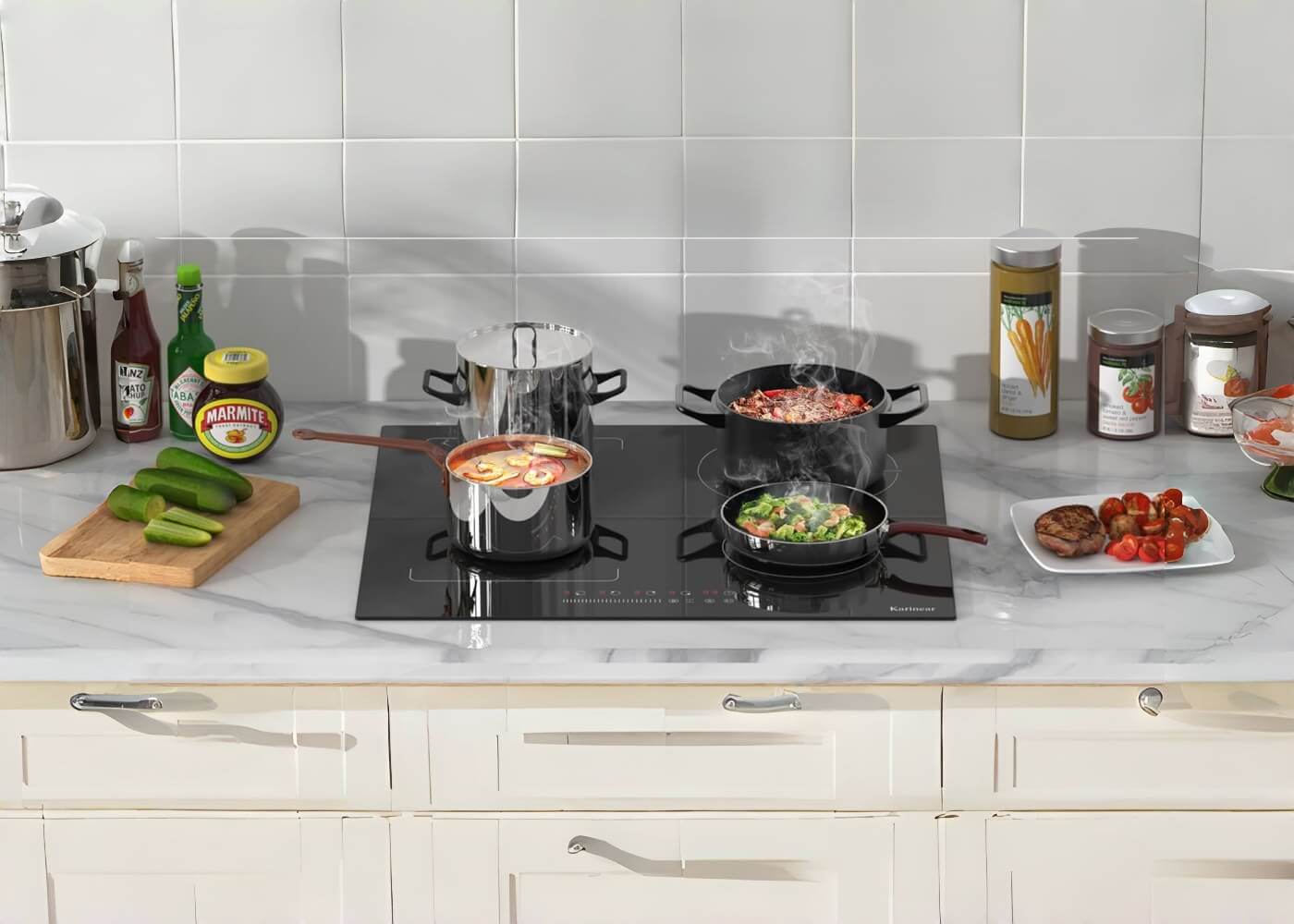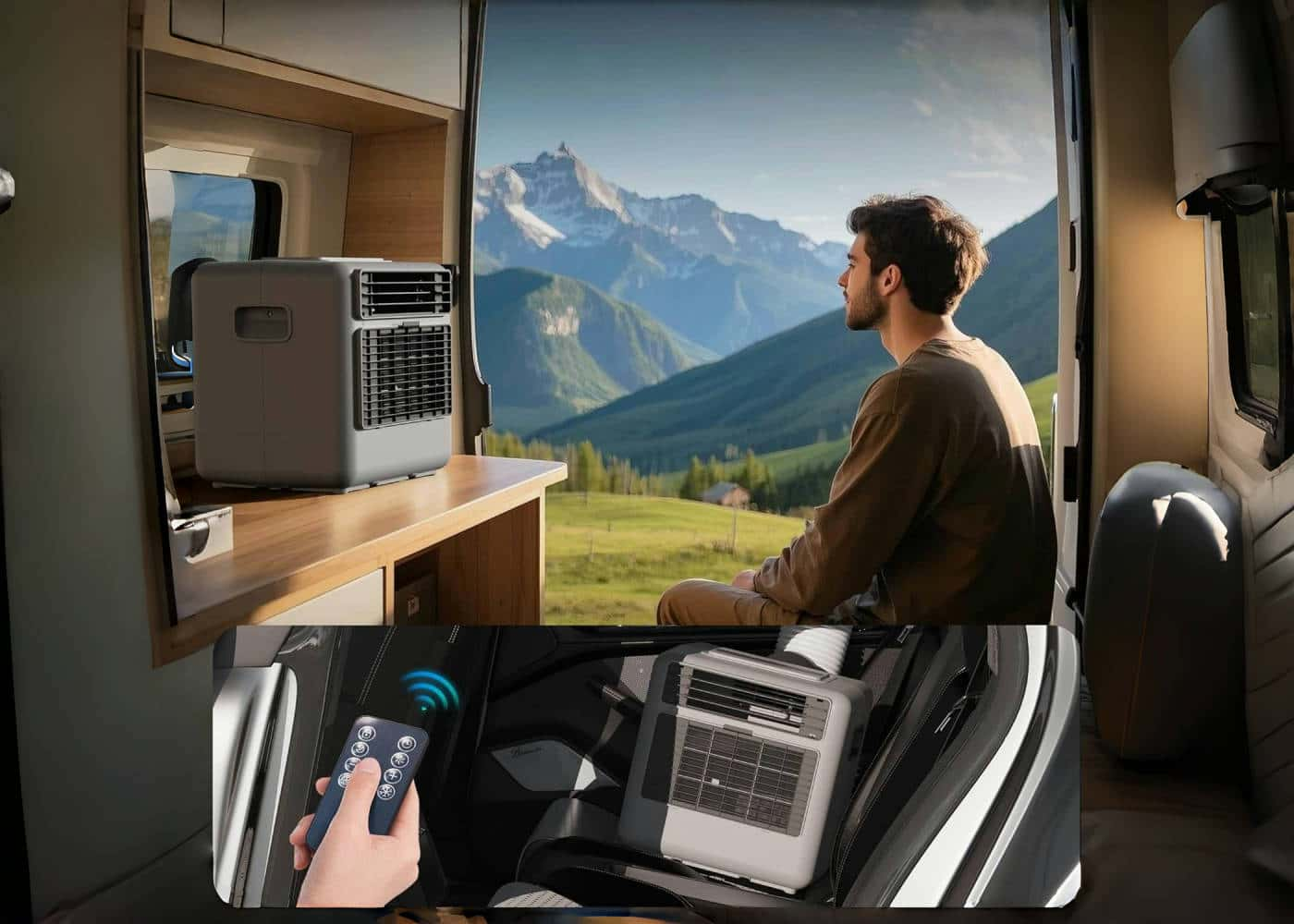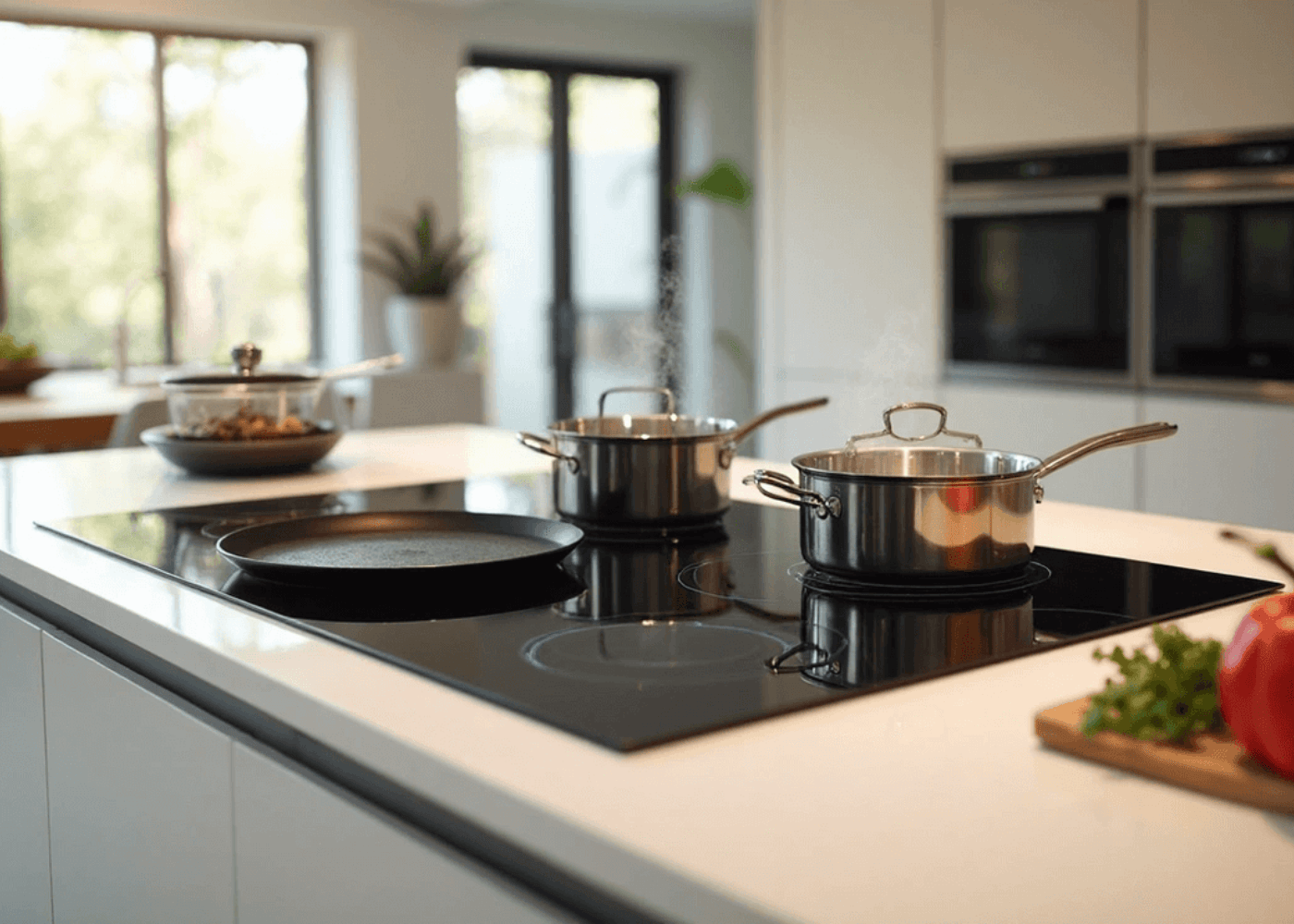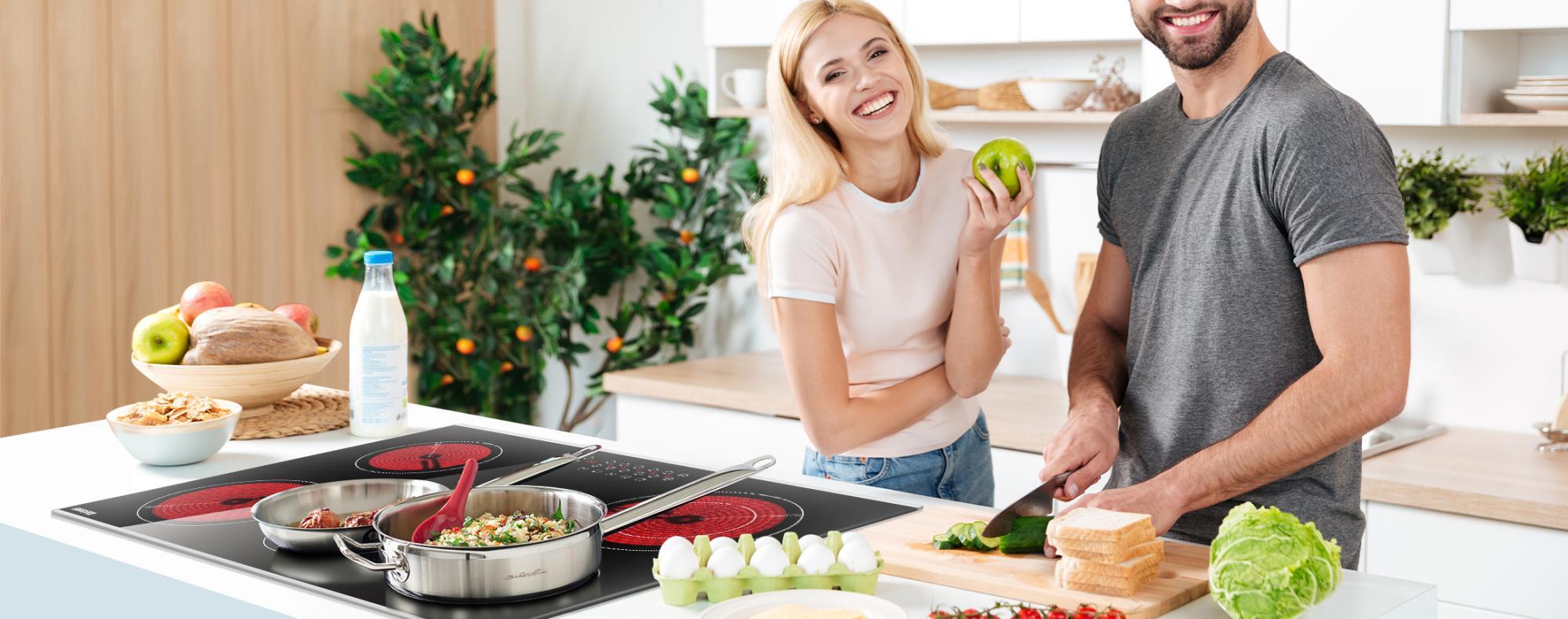
The number of induction cooktops in kitchens is increasing dramatically. A staggering 82% of owners believe they will never return to gas cooking. This isn't just another kitchen trend; the numbers demonstrate its true benefits. These advanced cooking surfaces can boil water in less than two minutes and outperform gas and older electric options.
The contrast between induction and electric cooktops tells an interesting story. Induction cooktops use up to 15% less energy than conventional electric cooktops and are nearly three times as efficient as gas cooktops. The safety features are unparalleled; the cooking surface remains cool to the touch, making burns and kitchen fires significantly less likely. Induction cooktops are now installed in only 3% of American homes, although 70% of consumers wish to purchase them in the future. This shows a significant shift in kitchen priorities.
This article will explain what distinguishes the best induction cooktops, how to choose the correct cookware, and why more home chefs are switching to them. You could be considering a kitchen renovation or simply wondering about new cooking technologies. In either case, you'll discover why induction may be the greatest option in 2025.
What Makes Induction Cooking Different
Induction cooktops use a revolutionary approach to heat generation. They don't use flames or hot electric coils like traditional methods. Instead, they create heat right inside your cookware using electromagnetism - this new way of cooking is changing how people prepare meals at home.
How electromagnetic heating works
Every induction cooktop contains a tightly wound copper coil beneath the ceramic glass surface. When you switch on the cooktop, a high-frequency alternating current is generated, which moves 20-30 times per second. This generates a strong magnetic field above the frying surface.
When you put a compatible pan on the burner, the science becomes more exciting. The magnetic field generates electric currents (known as eddy currents) within your cookware's metal. These currents swirl around, encountering resistance in the pan's substance. This generates heat via what scientists call Joule heating.
This system works amazingly well. Up to 90% of the energy goes straight to your food, while gas stoves only manage 40-55% and regular electric ranges hit 65-70%. Your kitchen stays cooler because almost no heat escapes into the air.
Why the cooktop stays cool
The biggest difference between induction and regular cooking methods is the cooktop surface stays almost cold. The electromagnetic field only works on ferromagnetic materials, so heat only forms in your cookware, not the glass-ceramic surface.
The surface gets a bit warm from touching the hot pan. The surface cools faster once you take your cookware off, so you can't burn yourself on an empty cooking zone. People who accidentally touch the surface when it's on won't get burned if there's no pan there.
Families with young kids or elderly members love this safety feature. The design removes a common kitchen danger – cooking surfaces that stay dangerously hot long after you're done cooking.
Instant heat and precision control
More professional chefs choose induction because it responds better than other methods. Gas or regular electric cooktops need time to heat up or cool down. Induction cooktops change temperature right away.
The electromagnetic field strength changes as soon as you adjust the power setting. This gives you better temperature control than even gas cooking. You get amazing precision, especially when cooking at lower temperatures where other methods struggle to keep steady heat.
Food cooks faster too. Water boils in about half the time compared to a regular gas stove. The heat spreads evenly through compatible cookware, so you won't get hot spots that burn your food.
These benefits explain why home chefs who want professional-level control choose induction cooking. They get speed, safety, and precision without giving up efficiency.

Top Benefits That Home Chefs Love
American home chefs love induction cooking, and with good reason too. These cooktops offer advantages that revolutionize your daily kitchen routine, going way beyond the reach and influence of regular cooking features.
Faster cooking times
You'll notice the incredible speed of induction cooking right away. Recent tests reveal induction cooktops boil water in just 5.8 seconds, while gas stoves take 8.3 seconds. Professional chefs have found that induction heats two to three times faster than gas, which cuts down your prep time.
Acclaimed chef Neil Perry puts it simply: "It's much faster to cook with induction: you can increase or drop the temperature far more quickly". No more waiting for pots to heat up or cool down. Consumer Reports tests show that induction cooktops boil water 20-40% faster than gas and traditional electric options.
Your busy household will save precious minutes every day. A regular pasta pot boils about twice as fast on an induction cooktop compared to gas or traditional electric. This means dinner reaches your table quicker, and you spend less time waiting around.
Energy efficiency and lower bills
Your cookware receives about 85% of energy directly through induction technology. This makes it incredibly efficient compared to gas cooking, which wastes about 60% of energy heating the surrounding air.
These savings show up on your utility bills. Energy Star calculations show that if everyone bought induction cooktops in 2021, we would have saved over $125 million in energy costs. Your household can enjoy lower monthly bills without compromising cooking quality.
On top of that, the environmental benefits are clear. Induction cooktops use up to three times less energy than gas stoves and about 10% less than conventional electric ranges. Switching to induction helps both your wallet and the planet.
Safer for families and kids
Safety makes induction cooking stand out. The cooktop surface stays cool except where it touches the hot pan. This makes it a great choice for homes with children or elderly family members since it reduces burn risks by a lot.
Chef Ming speaks from experience: "It's so much safer. I have kids, right, and you can literally touch everything around it [the cooking area on the cooktop]". Modern induction cooktops come packed with safety features like:
- Auto shut-off when no cookware sits on the surface
- Child safety locks that prevent accidents
- Temperature monitoring that prevents overheating
Your family's safety gets an extra boost since induction cooking produces no flames or combustion byproducts. This removes worries about gas leaks or indoor air pollution that can trigger respiratory issues.
Easier to clean and maintain
Induction cooktops' cleaning advantages come from their unique cooking method. Food rarely burns onto the glass since the surface never gets hot enough. When your homemade pasta sauce spills, you won't find charred messes stuck to the cooktop.
Affresh Appliance Care's brand manager Amanda Herman suggests: "The best way to keep a cooktop clean is to wipe it down after every use (once it's cooled down)". Many models now feature special coatings for easier cleaning. KitchenAid's WipeClean™ Coating on select models eliminates the need for scraping, heavy scrubbing or harsh cleaners.
Modern design and smart features
These cooktops bring sleek, minimalist style to modern kitchens. The smooth glass-ceramic surface looks great in any kitchen, adding a contemporary touch to your space.
Today's induction cooktops pack impressive features:
- Remote monitoring through smartphone apps with Wi-Fi connectivity
- AutoChef® settings that control cooking temperature automatically
- FlexInduction® zones that adapt to larger cookware
- Smart timers that adjust burner temperatures as needed
Smart features like these represent cooking's future, bringing convenience and performance together. The mix of speed, safety, efficiency, and smart technology explains why discerning home chefs in 2025 choose induction cooktops over other options.
Common Concerns and How to Overcome Them
Many potential buyers have legitimate questions about switching to induction cooking, even with its impressive advantages. Here's how you can easily overcome the most common concerns.
Cookware compatibility explained
Induction cooking works only with ferromagnetic cookware - not every metal will do the job. You can use cast iron, enameled steel, and specially designed stainless steel pans. Glass, ceramic, aluminum, copper, and non-magnetic stainless steel won't generate heat on an induction surface.
You can test your existing cookware easily:
- Hold a refrigerator magnet to the bottom of your pot or pan
- If the magnet sticks firmly, it will work perfectly with induction
- If the magnet barely clings, performance may be inconsistent
- If there's no attraction, the pan won't work at all
High-quality cookware brands now mark their products clearly as "induction-compatible" with a coil or zig-zag symbol. Pans with flat bottoms that match the cooking zone size work best.
Choosing the Best Induction Cooktop for Your Kitchen
Shopping for an induction cooktop? Let's think about these significant factors that will help you find a model that matches your cooking style and kitchen layout.
Size and layout options
You'll find induction cooktops in three main sizes that fit kitchens of all types. The 36-inch models give you five cooking elements and the most flexible cooking space. A 30-inch unit with four elements works great for standard kitchens without taking up too much counter space. The compact 24-inch options are perfect for smaller kitchens or apartments with their three elements. Your cooking habits should guide your choice - the extra cooking zone on bigger models is a great way to get more flexibility if you cook multiple dishes at once.
Power settings and temperature control
The best cooktops come with at least 15 power levels to give you exact temperature control. High-end models pack up to 20 different settings that let you handle delicate cooking tasks with amazing precision. The maximum wattage of the largest element will substantially affect performance - quality cooktops include at least one element with 3,600-watt power boost capability. Serious home chefs will love models with 4,800-5,400 watt elements that deliver professional-level cooking power.
Smart connectivity and app features
Today's induction cooktops often include Wi-Fi that makes shared monitoring possible through smartphone apps. These smart features help you adjust power levels, set timers, and get maintenance tips from anywhere in your home. Some models work automatically with compatible range hoods and turn on ventilation and lighting when you start cooking.
Best induction cooktops in 2025
Our extensive testing shows several standout models. The GE Profile PHP9036 comes with 19 power settings. The Bosch 800 Series NIT8660UC features a powerful 5,400-watt element. The Samsung NZ36K7880US/AA gives you a spacious continuous cooking zone. Small kitchen owners will appreciate the Samsung NZ30A3060UK/AA's excellent performance in a compact design.
Cookware for induction cooktops
Your pots and pans need ferromagnetic materials to work with induction. Cast iron, enameled steel, and specially designed stainless steel are all excellent choices. A simple magnet test tells you if a pan works - it should stick firmly to the bottom. The best results come from flat-bottomed cookware that matches your cooking element's size.
Conclusion
Induction cooktops represent the next evolution in home cooking technology. Their speed, safety, and precision make them an exceptional choice for anyone who takes cooking seriously. This piece shows how induction technology uses electromagnetic fields to transfer energy straight to cookware, which leads to faster cooking and saves energy by a lot.
These cooktops stand out from traditional methods because of their safety features. The cooking surface stays cool and removes common burn risks, which makes them perfect for homes with kids or elderly relatives. On top of that, you won't find any open flames or combustion byproducts, so your indoor air stays healthier.
Most home chefs quickly adapt to these cooktops despite their unfamiliarity at first. The responsive temperature control and consistent results win them over fast. A simple magnet test shows which of your existing cookware will work with the new cooktop, taking away any guesswork before you buy.
Your utility bills will shrink thanks to better energy efficiency, and you'll leave a smaller environmental footprint. The modern, sleek design fits perfectly in today's kitchens, while smart features add convenience that older cooking technologies couldn't match.
The cleaning benefits alone convince many homeowners to switch. You won't need to scrub burnt food from hot surfaces or clean around burner grates anymore. A quick wipe after the surface cools keeps your cooktop's new look for years.
More home chefs will switch to induction as they see these benefits firsthand. The technology has moved past its early limitations, and its advantages over gas and traditional electric options just make too much sense to pass up. Your next kitchen upgrade should include an induction cooktop, whether you're doing a full renovation or just want to improve your cooking setup.

